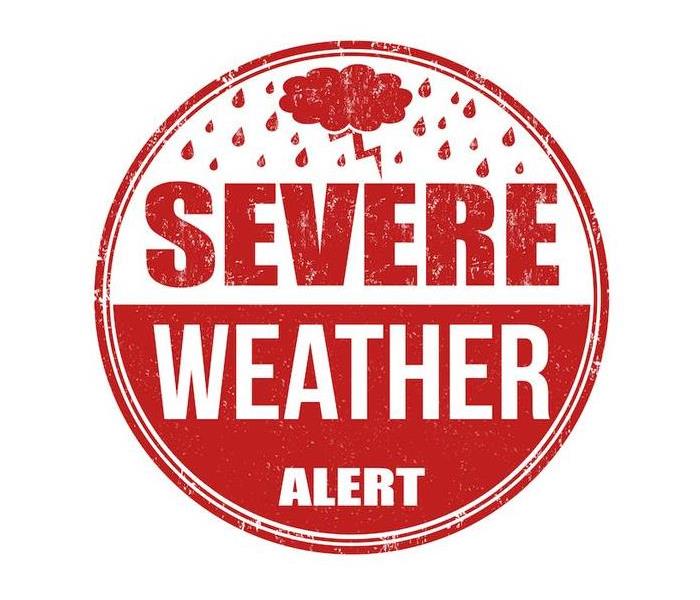Storm Alerts and Your Safety | SERVPRO® of Conway & Faulkner Counties
7/14/2022 (Permalink)
 If you suspect any damage to your home from a recent storm, call SERVPRO of Conway & Faulkner Counties.
If you suspect any damage to your home from a recent storm, call SERVPRO of Conway & Faulkner Counties.
One of the unique aspects of American life is that there are so many different weather patterns and climates across the country. In order to keep all of those potential weather situations organized, they are associated with 42 different kinds of weather alerts, and those alerts are subcategorized into multiple smaller groups.
With all of these variables occurring during any type of severe weather, it can be overwhelming!
While it can be helpful to have a solid understanding of all of the different possible alerts, it is really only imperative to understand the ones that commonly are issued here in Conway and Faulkner counties.
We all rely on weather forecasting to plan our lives and events, but have you ever wondered how those forecasts are issued in the first place? Since weather forecasts are, at best, educated predictions, meteorologists have to use several factors at their disposal to determine the severity, location and length of any potential severe weather.
To start, the National Weather Service oversees the weather forecasting for the entire nation and for issuing alerts based on those forecasts. To help keep each forecast and alert as accurate as possible, the NWS is broken down into six regional offices around the country, along with sub-offices closer to home.
The Southern Region located in Fort Worth, Texas is the office responsible for our weather forecasting in Conway and Faulkner counties.
The staff employed at the Southern Region office use satellite radar, sensors, seismic activity and solar patterns to create each forecast and any adjoining alerts. While they understand that even the most well-researched forecasts can go awry as Mother Nature is unpredictable, they do their best to make sure they are as precise and thorough as they can be.
The most basic weather alerts that we should all understand are watches and warnings. These two terms are used in almost all weather alerts.
When the NWS issues a watch, it means that they have recognized the potential for an incoming storm to produce dangerous qualities like high winds, tornadoes or heavy rains. Storm watches should make you begin to prepare your safe shelter location and keep an eye on the sky.
When a warning is issued or replaces a watch, though, you need to be seeking shelter as soon as possible. A warning means that the incoming storm is currently producing dangerous conditions and you need to be out of the elements in order to stay safe.
Since Arkansas is considered part of “tornado alley,” we tend to be vulnerable to severe storms with frequent tornadoes. The more you understand about how tornado warnings are issued, the safer you can be!
Your family’s safety is always the most important aspect of any weather event, but if you have advanced notice of an incoming storm, you might have some additional time to get your home ready to weather any potential damages.
Clearing your gutters and securing your outdoor furniture are two things your family can do to reduce the risk of damages to your home via water or flying debris. It would also be a good idea to check on your emergency kit and add anything that is missing or depleted.
After the severe threat has passed, take pictures and inventory of any damage that has occurred. If you need assistance with the damages, call us at SERVPRO of Conway & Faulkner Counties. We will answer you 24⁄7 and begin creating your restoration plan as soon as we are able.
The more you understand about the weather here, the safer you can stay. By taking the time to review the local weather risks and brushing up on your knowledge of how alerts are issued in your area, you are setting yourself up to be prepared for any storms that come our way.
Experienced storm damage to your home or property? Contact us today for a quick response!




 24/7 Emergency Service
24/7 Emergency Service